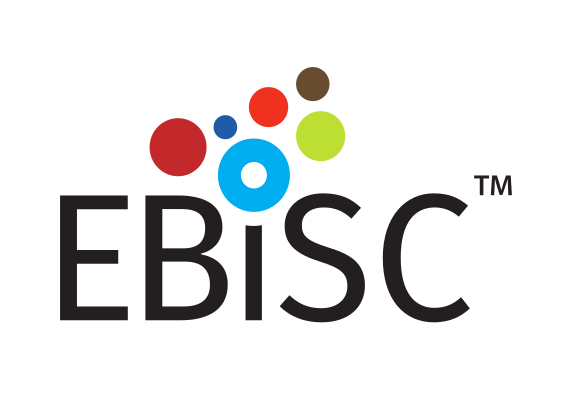If the cells you would like to access are currently listed as unavailable or
you would like information on local partners in USA, Australia, New Zealand or Japan who can support order and delivery,
please get in touch via
Contact@EBiSC.org.
UKBi011-A-3
ApoE 3/3
Gene-edited iPSC line
A CLIP contains information about a cell line including any
specific third party obligations relating to, for example,
licensing obligations or the donor consent which affect the
use of the cell line.
The EBiSC Access and Use Agreement must be completed along with an individual
Cell Line Information Pack for each line. Complete the EAUA and send to Contact@EBiSC.org
for countersignature. The EAUA must be fully signed before proceeding with your order.
A batch specific Certificate of Analysis will be available to
download once you receive your EBiSC iPSC line.
General#
Cell Line |
|
| hPSCreg name | UKBi011-A-3 |
| Alternative name(s) |
ApoE 3/3
|
| Cell line type | Human induced pluripotent stem cell (hiPSC) |
| Similar lines |
BIONi010-C-3 (BIONi010-C ApoE KO #KO30 P30) BIONi037-A-2 (BIONi037-A ApoE2/2 #M10-7) BIONi037-A-3 (BIONi037-A ApoE3/4 #P10-22) BIONi037-A-4 (BIONi037-A ApoE4/4 #I10-53) BIONi037-A-1 (16423 ApoE KO) BIONi010-C-2 (BIONi010-C ApoE E3/E3 #H8 P32) BIONi010-C-4 (BIONi010-C ApoE E4/E4 #B44 P27) BIONi010-C-6 (BIONi010-C ApoE E2/E2) |
| Notes | This line is part of a set of isogenic APOE lines based on the iPS cell line UKBi011-A. The set comprises the following APOE genotypes: • UKBi011-A-1 (APOE KO) • UKBi011-A-2 (APOE 2/2) • UKBi011-A-3 (APOE 3/3) • UKBi011-A-4 (APOE 3/4) • UKBi011-A (APOE 4/4) A DNA SNP array revealed no larger chromosomal aberrations to be reported. Other isogenic ApoE cell line cohorts are also available, generated from BIONi010-C, BIONi037-A and STBCi006-A. |
Provider |
|
| Depositor | Bioneer (BION) |
| Owner | Bioneer (BION) |
| Distributors |
EBiSC
|
| Derivation country | Denmark |
External Databases |
|
| hPSCreg | UKBi011-A-3 |
| BioSamples | SAMEA104243176 |
| Cellosaurus | CVCL_RX83 |
| Wikidata | Q54990270 |
General Information |
|
| Publications | View all related publications on hPSCreg (7) |
| This EBiSC line can be used for: |
Yes
Research use: allowed
Clinical use: no
Commercial use: no
|
| Subclone of | |
Donor Information#
General Donor Information |
|
| Sex | male |
| Ethnicity | Caucasia, German |
Phenotype and Disease related information (Donor) |
|
| Diseases | A disease was diagnosed.
|
Karyotyping (Donor) |
|
| Has the donor karyotype been analysed? |
Unknown
|
Other Genotyping (Donor) |
|
| Is there genome-wide genotyping or functional data available? |
No
|
External Databases (Donor) |
|
| BioSamples | SAMEA104132641 |
hIPSC Derivation#
General |
|
|
The source cell information can be found in the parental cell line
UKBi011-A.
|
|
Reprogramming method |
|
| Vector type | Non-integrating |
| Vector | Sendai virus |
| Is reprogramming vector detectable? |
No |
Vector free reprogramming |
|
Other |
|
| Derived under xeno-free conditions |
No |
| Derived under GMP? |
No |
| Available as clinical grade? |
No |
Culture Conditions#
Latest released batch |
|
| Culture medium | mTeSR1 |
| Passage method | EDTA |
| Surface coating | Matrigel |
| O2 concentration | 21 |
| CO2 concentration | 5 |
| Temperature | +37°C |
The following are the depositor culture conditions, they do not refer to any specific batch.
| Surface coating | Matrigel/Geltrex |
| Feeder cells |
No |
| Passage method |
Enzyme-free cell dissociation
EDTA
|
| O2 Concentration | 18 % |
| CO2 Concentration | 5 % |
| Medium |
Essential 8™
|
| Has Rock inhibitor (Y27632) been used at passage previously with this cell line? | Yes |
| Has Rock inhibitor (Y27632) been used at cryo previously with this cell line? | No |
| Has Rock inhibitor (Y27632) been used at thaw previously with this cell line? | No |
Characterisation#
Microbiology / Virus Screening |
|
| HIV 1 | Negative |
| HIV 2 | Negative |
| Hepatitis B | Negative |
| Hepatitis C | Negative |
| Mycoplasma | Negative |
Sterility |
|
| Inoculation for microbiological growth | No Contaminants Detected |
| Mycoplasma | Not Detected |
| Viability | Viable post-cryopreservation |
Genotyping#
Karyotyping (Cell Line) |
|
| Has the cell line karyotype been analysed? |
Yes
|
Other Genotyping (Cell Line) |
|
Genetic Modification#
| Disease/phenotype related modifications |
|
